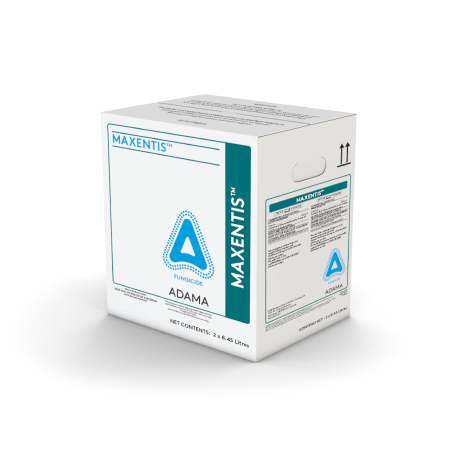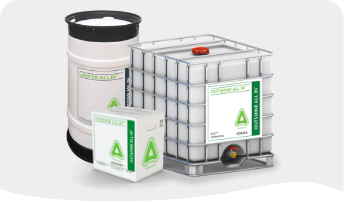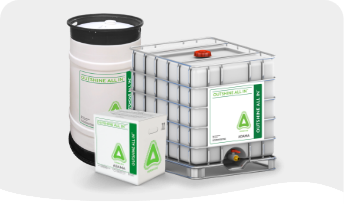WE ARE All InOn Blueberries
At ADAMA, we listen and learn from growers. That’s how we craft innovative solutions that not only deliver exceptional performance but also provide added convenience for growers.
Consider SORATEL® fungicide, our first product featuring Asorbital® Formulation Technology which offers 5% higher efficacy vs. competitive products and improved leaf penetration into the plant, along with preventative, curative and eradicative control of multiple diseases including mummy berry.
Or INVOLVE® WDG which has recently been registered in lowbush blueberries for the control of bunchberry, speckled alder, yellow loosestrife, bracken fern and wild rose.
Finally our latest fungicide solution MAXENTIS® for control of rust in lowbush blueberries and offers long-lasting, dual-mode protection and higher yields in an easy-to-use advanced formulated mix.

Innovative Solutions
Learning Center
Mummy berry, Monilinia vaccinii-corymbosi, is the most serious and widespread disease in highbush and lowbush blueberries. Controlling this disease before it can ‘mummify‘ your blueberries is key.

Mummy berry pest profile
When to scout:
Mummy berry produces primary spores only for a brief period starting in early to mid-May. The spores originate from mummy berries produced in previous crops. Blossoms and leaves can be infected any time from bud burst to the start of the bloom period. For any infection to occur, rain or an extended period of fog is necessary. When weather is warm the length of time the plants must remain wet for infection to occur is shortened.
When to spray:
The first fungicide spray should be applied when 40% of the blossom buds have the bud scales separated. A second application should be applied 7–10 days later.
How to identify:
Once blight is evident in the field, most of the primary spores have already been released from the mummy berries and the crop is at the end of its susceptible period. Applying fungicides at this time is not effective. Secondary spores produced on blighted plants infect blossoms which then develop into mummy berries.
Source: New Brunswick Agriculture
Controlling mummy berry with SORATEL®
Key Benefits:
- Technologically advanced formulation new to Canada
- Improved penetration efficacy, decreasing loss of active due to run off or
sun degradation - Excellent systemic movement throughout the plants
- Control of multiple diseases in multiple crops
- Wide window of application
Unlike other crops, lowbush blueberry plants have to contend with incredibly robust ‘weeds‘ that can survive and thrive under conditions where most weeds would not. And because the weeds are varieties of trees, they can rob valuable nutrients at a higher rate than typical broadleaf weeds.

Bunchberry weed profile
When to scout:
Bunchberry is a perennial weed that flowers in the spring, typically through June, and fruits through August.
How to identify
- The bunchberry stem is 3" to 9" high and woody at the base.
- There are four to six terminally whorled leaves with one or two pairs of smaller leaves below.
- Leaves are acute at both ends with two to three lateral veins arising from the midvein.
- Flowers are white and solitary on a short stem with 4 white involucral bracts.
- Bright red berries develo by late summer.
Source: University of Maine Cooperative Extension
Controlling bunchberry with INVOLVE® 50 WDG herbicide
We have received a NEW Registration for bunchberry in lowbush
blueberries! Along with bunchberry, INVOLVE® 50 WDG also will control
bracken fern, yellow loosestrife, speckled alder and wild rose.
INVOLVE® 50 WDG for blueberries tech sheet
Unlike other crops, lowbush blueberry plants have to contend with incredibly robust ‘weeds’ that can survive and thrive under conditions where most weeds would not. And because the weeds are varieties of trees, they can rob valuable nutrients at a higher rate than typical broadleaf weeds.
Key Benefits:
- Unique combination of Prothioconazole and Azoxystrobin
- Enhanced EC formulation – with bulk packaging capabilities
- Multi-mode activity for resistance management (Groups 3 & 11)
- Protective and curative action
- Whole plant protection: translaminar and systemic movement
- Wide window of application

Resources

Blueberry One Pager
When it comes to improving the yield potential of your blueberries, ADAMA is pleased to provide you with an exceptional lineup of new innovations and proven performers. And now planning your program just got easier with the Blueberry Solutions One Pager.
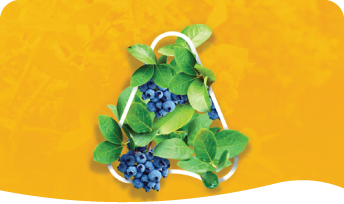
Blueberry Solutions
With new solutions blueberry solutions, ADAMA’s portfolio is always improving. View the full blueberry portfolio of herbicides, fungicides & insecticides for full season protection.
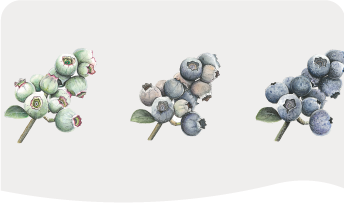
Blueberries Growth Stage Chart


Sign up for the ADAMA Innovations Newsletter.
Receive information on our newest products, formulation improvements, online tools and other agronomic resources – for free!
We want to help
If you’ve got questions about our innovative lineup of blueberry products or want help improving your yield performance, your local ADAMA representative is only a call away.
Find your rep
